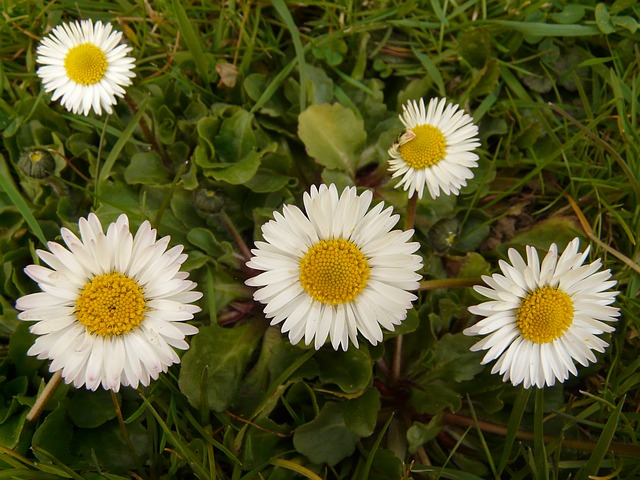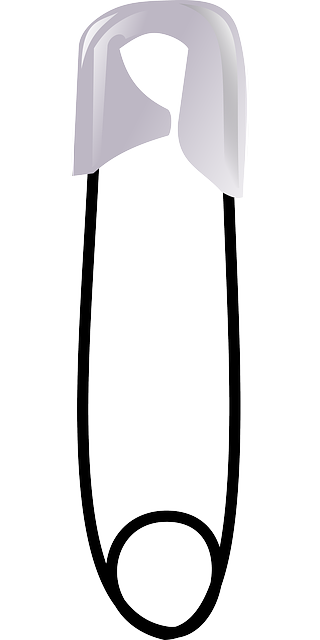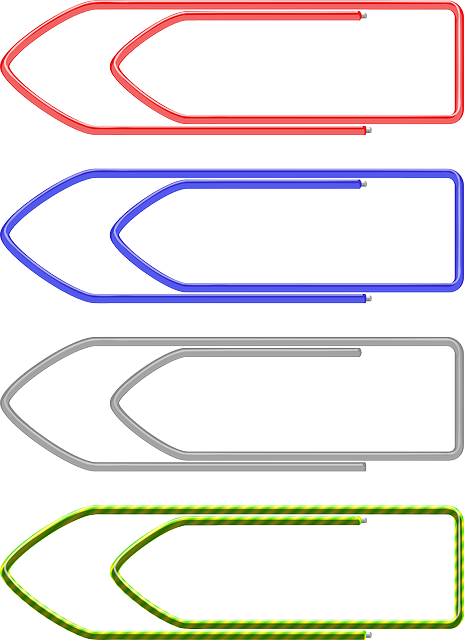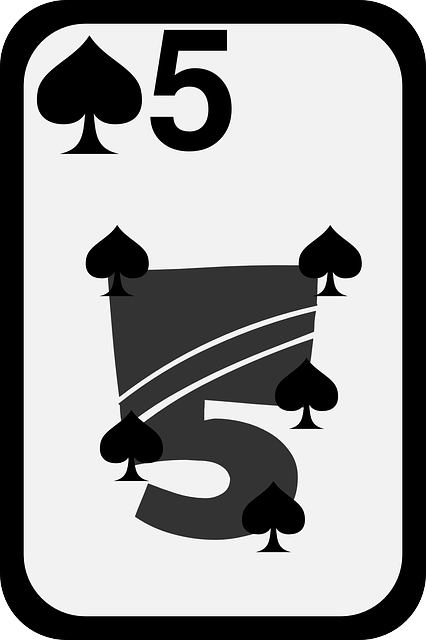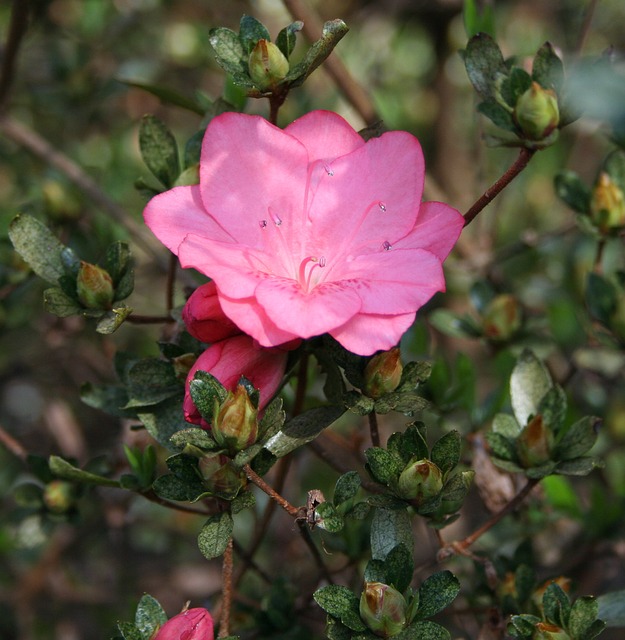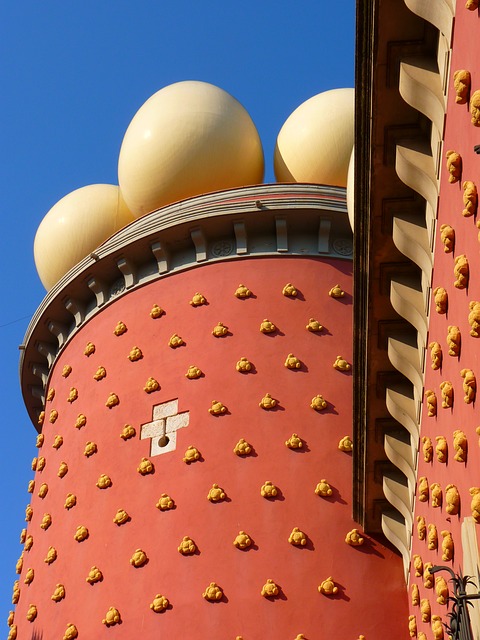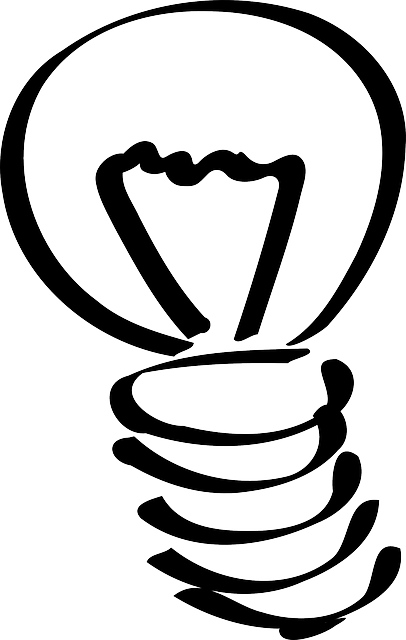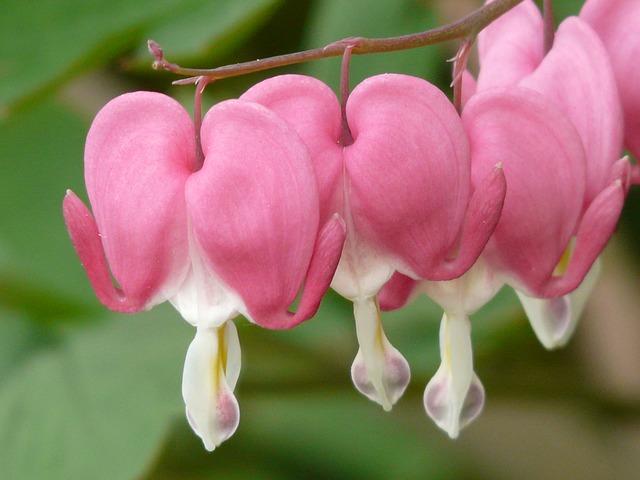أسرة سونگ
|
Song
宋
| |||||||||
|---|---|---|---|---|---|---|---|---|---|
| 960–1279 | |||||||||
|
سونگ الشمالية في 1111 م
| |||||||||
| المكانة | امبراطورية | ||||||||
| العاصمة |
بيانجينگ (汴京) (960-1127) لين حتى (臨安) (1127–1276) |
||||||||
| اللغات الشائعة | الصينية | ||||||||
| الدين | البوذية، الطاوية، الكنفوشية | ||||||||
| الحكومة | ملكية | ||||||||
| امبراطور | |||||||||
• 960-976 |
الامبراطور تايزو | ||||||||
• 1126-1127 |
الامبراطور تشينزونگ | ||||||||
• 1127-1162 |
الامبراطور گاوزونگ | ||||||||
• 1278-1279 |
الامبراطور بينگ | ||||||||
| التاريخ | |||||||||
• ژاوكوانگين يستولي على عرش أسرة جواللاحقة |
960 960 | ||||||||
• حادثة جينگكانگ |
1127 | ||||||||
• استسلام لِن حتى |
1276 | ||||||||
• معركة يامن؛ نهاية حكم سونگ |
1279 1279 | ||||||||
| التعداد | |||||||||
• ذروتها |
100,000,000a[›] | ||||||||
| Currency | جياوزي، هويزي، عملات نحاسية إلخ. | ||||||||
| |||||||||
|
| |||||||
|---|---|---|---|---|---|---|---|
| القديم | |||||||
| السادة الثلاثة والأباطرة الخمسة | |||||||
| أسرة شيا 2070–1600 ق.م. | |||||||
| أسرة شانگ 1600–1046 ق.م. | |||||||
| أسرة ژو 1122–256 ق.م. | |||||||
| ژوالغربية | |||||||
| ژوالشرقية | |||||||
| فترة الربيع والخريف | |||||||
| فترة الممالك المتحاربة | |||||||
| الامبراطوري | |||||||
| أسرة تشين 221 ق.م.–206 ق.م. | |||||||
| أسرة هان 206 ق.م.–220 م | |||||||
| هان الغربية | |||||||
| أسرة شين | |||||||
| هان الشرقية | |||||||
| الممالك الثلاث 220–280 | |||||||
| وِيْ, شوووو | |||||||
| أسرة جين 265–420 | |||||||
| جين الغربية | |||||||
| جين الشرقية |
16 مملكة 304–439 |
||||||
| الأسر الجنوبية والشمالية 420–589 | |||||||
| أسرة سوي 581–619 | |||||||
| أسرة تانگ 618–907 | |||||||
|
عشرة ممالك 907–960 |
أسرة لياو 907–1125 |
||||||
|
أسرة سونگ 960–1279 |
|||||||
| سونگ الشمالية | شيا غ. | ||||||
| سونگ الجنوبية | أسرة جين | ||||||
| أسرة يوان 1271–1368 | |||||||
| أسرة مينگ 1368–1644 | |||||||
| أسرة تشينگ 1644–1911 | |||||||
| المعاصر | |||||||
| تاريخ جمهورية الصين 1912–1949 | |||||||
| الصين الشعبية 1949–للحاضر |
جمهورية الصين |
||||||
|
منطقات ذات صلة
| |||||||
أسرة سونگ (صينية تقليدية: 宋朝; پنين: Sòng Cháo؛ ويد-جايلز: Sung Ch'ao؛ بالإنگليزية: Song Dynasty) أسرة حاكمة في الصين بين 960-1279 م؛ اتىت بعد فترة الأسر الخمس والممالك العشر، وتبعتها أسرة يوان. وكانت أول حكومة في تاريخ العالم تصدر بنكنوت أومال ورقي،b[›] وأول قوة سياسية بالصين تنشئ أسطول حربي دائم.c[›]
ويقسم عهد أسرة سونگ قسمين: أسرة سونگ الشمالية (960-1126م) وأسرة سونگ الجنوبية (1127-1279م).
نشأت الأسرة على يد تشاوكوانگين Chao kuang-yin الذي عهد لاحقاً باسم الامبراطور سونگ تاي-تسوSung tai-tsu، بعد قضائه على أسرة تشوChou التي كانت تحكم سهل الصين الشمالي. وبعد حتى توطد الأمر لأسرة سونگ، بدأ الامبراطور تاي ـ تسو، ومن بعده الامبراطور تاي-تسونگ Tai-tsung الذي خلفه عام 976، محاولة السيطرة على بقية أراضي الشمال وعلى عدد من ممالك الجنوب. وتوحدت الامبراطورية في عام 978، وقد أسسا عاصمة الأسرة في كاي-فنگ Kai- Feng شمالي الصين، بيد حتى الدويلات الأجنبية القوية على الحدود الشمالية وقفت عائقاً أمام محاولات توسع الامبراطورية في ذلك الاتجاه.
التاريخ
كانت أسرة سونگ واحدة من عدة دويلات تنافست على بسط النفوذ في شرقي آسيا، وقد ارتبط بقاء الأسرة بقدرة الحكومة على تأسيس علاقات راسخة مع الجوار. وبعد توحيد الشمال والجنوب تحوّل الامبراطور تاي ـ تسونگ إلى الحدود الشمالية الشرقية (بكين اليوم) وحاول استعادة ست عشرة ولاية يسكنها صينيون أصليون من شعوب الخيتان Khitanas، وهم اتحاد كونفدرالي قبلي، كان قد أسس أسرة لياوLiao منذ عام 907. بيد حتى أسرة سونگ منيت بالهزيمة وسقطت اتفاقية سلام مع أسرة لياووافقت بموجبها على دفع مئة ألف أونصة فضة و200000 ثوب حرير سنوياً للمنتصر. ومع حتى تلك الاتفاقية كانت مذلة، إلا أنها وفرت، إلى جانب جيش أسرة سونگ الدفاعي الكبير، سلاماً نسبياً مدة قرن تقريباً.
وعلى الحدود الشمالية الغربية كان هناك اتحاد قبلي آسيوي آخر من شعوب تانگوت Tangut الذين أسسوا أسرة تسي تسيا Xixia، وكانت دولة التانگوت تتلقى جزية سنوية من أسرة سونگ أيضاً بعد اتفاق السلام الذي أبرم عام 1044. أما قبائل التبت فكانت تشغل إقليم تورفان Turfan (إقليم شنغهاي اليوم) على الحدود الغربية، في حين كانت مملكة تا-لي Ta-Li المستقلة تقع على الحدود الجنوبية الغربية في الإقليم الذي يعهد اليوم باسم يونّان Yunnan.
استمرت تلك الأوضاع حتى عشرينيات القرن الثاني عشر حين تحالفت أسرة سونگ مع أسرة تشين Chin عام 1119، في محاولة لاستعادة الولايات الست عشرة من أسرة لياو. استطاعت دولة شين هزم أسرة لياوعام 1125، لكنها قلبت ظهر المجن وفرضت حصاراً على عاصمة سونگ الشمالية، كاي-فنگ.
وفي عام 1126 أسرت أسرة لياوأفراد البلاط الملكي لأسرة سونگ وأوفدتهم إلى الشمال، بيد حتى أحد الأمراء تجنب الوقوع في الأسر واستعاد تجميع الأسرة في الجنوب في هانگ-تشوHang-Chou وحكم باسم الامبراطور كاوتسونگ Kao Tsung.
اختار كاوتسونگ عاصمة لنفسه أطلق عليها «لين ـ آن» Lin - an (هانغ ـ شواليوم)، وأبرم اتفاقية سلام مع أسرة شين في الشمال عام 1141، على الرغم من معارضة قادته العسكريين والسياسيين الذين طالبوا ببذل ما أمكن لاستعادة الشمال.
كان كاوتسونگ معجباً بطريقة أسرة هان Han في الإدارة المدنية ومقلداً لها، وقد نجحت بيروقراطية أسرة سونگ في عملها مدة طويلة قبل حتى يبدأ انهيار السلالة. ولم يكن انهيار أسرة سونگ مفاجئاً، وانتهت كغيرها من السلالات التي سبقت، فقد بدأ المغول بقيادة جنكيزخان تحركهم إلى الصين بهجوم على إحدى دويلات الصين في الشمال عام 1211. وبعد نجاح المغول في الشمال، وبعد عقود من تعايشهم الصعب مع أسرة سونگ، زحفوا بقيادة حفيد جنكيزخان نحوقوات سونگ عام 1250، وصمدت قوات سونگ في وجه المغول إلى حتى سقطت عاصمتهم عام 1276.
توفي آخر أباطرة أسرة سونگ بعد ثلاث سنوات (1279) في أثناء هروبه.
كانت حقبة أسرة سونگ نقطة بداية لعلاقة جديدة بين الحكومة والمجتمع، وتمثل أواخر العهد الامبراطوري في الصين، وقد حكمت أسرة سونگ نحو100 مليون نسمة بالاعتماد على بيروقراطية مركزية قوية يقودها موظفون فهماء.
سونگ الشمالية 959-1126
الامبراطور تايزومن سونگ (حكم 960-976) وحد الصين بغزوالأراضي الأخرى في عهده، منهياً انقلاب فترة الأسر الخمس والممالك العشر. في كايفنگ، أسس حكومة مركزية قوية لتدير شؤون الامبراطورية. أمن الاستقرار الاداري بتعزيز نظام اختبار الخدمة المدنية لحمل كفاءة بيروقراطيوالدولة بالمهارات والجدارة (بدلاً من المناصب الأرستقراطية أوالعسكرية) وشجع المشروعات التي تضمن كفاءة الاتصالات عبر الامبراطورية. في إحدى هذه المشروعات، رسم رساموالخرائط خريطة مفصلة لكل مقاطعة ومدينة ثم تم جمعها في أطلس ضخم. شجع الامبراطور تايزوأيضاً العلوم الرائدة والابتكارات التقنية بدعمه مثل هذه النوعية من الأعمال مثل برج الساعة الفلكية الذي صممه وبناه المهندس ژانگ سيشون.
أقام بلاط سونگ علاقات دبلوماسية مع الهند چولا، الخلافة الفاطمية، سريڤيجايا، خانية قرةخانات في آسيا الوسطى، وبلدان أخرى كانت أيضاً شريكاً تجارياً مع اليابان. ومع عذلك، فكان لدول الجوار القريبة من الصين أعظم الأثر على سياستها الداخلية والخارجية. منذ انشائها في عهد تايزو، أسرة سونگ alternated بين الحرب والدبلوماسية مع عرقية الخيتان من اسرة لياوفي شمال شرق البلاد ومع شعوب تانگوت من شيا الغربية تحت سيطرة الخيتان التي تعتبر تاريخياً جزء من الصين الداخلية. ومع ذلك، فقد صُدت قوات سونگ على يد قوات لياوالتي شاركت في الحملات العدوانية السنوية على أراضي سونگ الشمالية حتى عام 1005، عندما تم التوقيع على معاهدة شانيوان التي أنهت الاشتباكات على الحدود الشمالية. أُجبرت أسرة سونگ على دفع جزية للخيتان، بالرغم من حتى دفع هذه الجزية لم تلحق ضرراً كبيراً باقتصاد سونگ الكلي حيث حتى الكتيان كانوا يعتمدون بشكل كبير على إستيراد كميات ضخمة من البضائع من أسرة سونگ. والأهم من ذلك، اعترفت دولة سونگ بدولة لياوas its diplomatic equal. سعت أسرة سونگ إلى تحقيق الكثير من الفوزات العسكرية على التانگوت في أوائل القرن 11، وبلغت ذروتها في الحملة التي قادها العالم، الجنرال ورجل الدولة شنوكوو(1031–1095). ومع ذلك، ففي نهاية الأمر باءت هذه الحملة بالفشل بسبب عصيان من قبل الضابط العسكري المنافس لشن للأوامر المباشرة، وفي النهاية فُقدت الأراضي التي تم الاستيلاء عليها من شيا الغربية. دارت كذلك حرب كبرى ضد أسرة لي من ڤيتنام من عام 1075 حتى 1077 بسبب نزاع حدودي وبترت أسرة سونگ علاقاتها التجارية مع مكلة داي ڤييت. بعدما منيت أسرة لي بأضرار جسيمة في غارة على گوانگشي، وتوغل قائد سونگ، گووكوي (1022–1088) في ثانگ لونگ (هاوني المعاصرة). إلا حتى الخسائر الجسيمة على الجانبيت دفعت قائد لي ثونگ كايت (1019–1105) إلى تقديم مبادرات سلام، مما جاز للجانبين بالإنسحاب من الجهد الحربي؛ وفي عام 1082 تم تبادل الأراضي التي استولت عليها سونگ ولي، وكذلك أسرى الحرب.
During the 11th century, political rivalries thoroughly divided members of the court due to the ministers' differing approaches, opinions, and policies regarding the handling of the Song's complex society and thriving economy. The idealist Chancellor, Fan Zhongyan (989–1052), was the first to receive a heated political backlash when he attempted to make such reforms as improving the recruitment system of officials, increasing the salaries for minor officials, and establishing sponsorship programs to allow a wider range of people to be well educated and eligible for state service.
After Fan was forced to step down from his office, Wang Anshi (1021–1086) became Chancellor of the imperial court. With the backing of Emperor Shenzong (1067–1085), Wang Anshi severely criticized the educational system and state bureaucracy. Seeking to resolve what he saw as state corruption and negligence, Wang implemented a series of reforms called the New Policies. These involved land value tax reform, the establishment of several government monopolies, the support of local militias, and the creation of higher standards for the Imperial examination to make it more practical for men skilled in statecraft to pass.
The reforms created political factions in the court. Wang Anshi's "New Policies Group" (Xin Fa), also known as the "Reformers", were opposed by the ministers in the "Conservative" faction led by the historian and Chancellor Sima Guang (1019–1086). As one faction supplanted another in the majority position of the court ministers, it would demote rival officials and exile them to govern remote frontier regions of the empire. One of the prominent victims of the political rivalry, the famous poet and statesman Su Shi (1037–1101), was jailed and eventually exiled for criticizing Wang's reforms.
While the central Song court remained politically divided and focused upon its internal affairs, alarming new events to the north in the Liao state finally came to its attention. The Jurchen, a subject tribe of the Liao, rebelled against them and formed their own state, the Jin dynasty (1115–1234). The Song official Tong Guan (1054–1126) advised Emperor Huizong (1100–1125) to form an alliance with the Jurchens, and the joint military campaign under this Alliance Conducted at Sea toppled and completely conquered the Liao dynasty by 1125.
However, the poor performance and military weakness of the Song army was observed by the Jurchens, who immediately broke the alliance, beginning the Jin–Song Wars of 1125 and 1127; during the latter invasion, the Jurchens captured not only the capital, but the retired emperor Huizong, his successor Emperor Qinzong, and most of the Imperial court. This took place in the year of Jingkang (الصينية التقليدية: 靖康) and it is known as the Jingkang Incident (الصينية التقليدية: 靖康之恥).
The remaining Song forces regrouped under the self-proclaimed Emperor Gaozong of Song (1127–1162) and withdrew south of the Yangtze to establish a new capital at Lin'an (modern Hangzhou). The Jurchen conquest of North China and shift of capitals from Kaifeng to Lin'an was the dividing line between the Northern and Southern Song dynasties.
سونگ الجنوبية 1127-1279
Although weakened and pushed south along the Huai River, the Southern Song found new ways to bolster its strong economy and defend its own state against the Jin dynasty. They had able military officers such as Yue Fei and Han Shizhong. The government sponsored massive shipbuilding and harbor improvement projects, and the construction of beacons and seaport warehouses in order to support maritime trade abroad and the major international seaports, such as Quanzhou, Guangzhou, and Xiamen, that were sustaining China's commerce. To protect and support the multitudes of ships sailing for maritime interests into the waters of the East China Sea and Yellow Sea (to Korea and Japan), Southeast Asia, the Indian Ocean, and the Red Sea, it was a necessity to establish an official standing navy. The Song dynasty therefore established China's first permanent navy in 1132, with a headquarters at Dinghai. With a permanent navy, the Song were prepared to face the naval forces of the Jin on the Yangtze River in 1161, in the Battle of Tangdao and the Battle of Caishi. During these battles the Song navy employed swift paddle wheel driven naval vessels armed with trebuchet catapults aboard the decks that launched gunpowder bombs. Although the Jin forces commanded by Emperor Hailing boasted 70,000 men on 600 warships, and the Song forces only 3,000 men on 120 warships, the Song dynasty forces were victorious in both battles due to the destructive power of the bombs and the rapid assaults by paddle wheel ships. The strength of the navy was heavily emphasized after that. A century after the navy was founded it had grown in size to 52,000 fighting marines. The Song government confiscated portions of land owned by the landed gentry in order to raise revenue for these projects, an act which caused dissension and loss of loyalty amongst leading members of Song society but did not stop the Song's defensive preparations. Financial matters were made worse by the fact that many wealthy, land-owning families—some which had officials working for the government—used their social connections with those in office in order to obtain tax-exempt status.
Although the Song dynasty was able to hold back the Jin, a new considerable foe came to power over the steppe, deserts, and plains north of the Jin dynasty. The Mongols, led by Genghis Khan (r. 1206–1227), initially invaded the Jin dynasty in 1205 and 1209, engaging in large raids across its borders, and in 1211 an enormous Mongol army was assembled to invade the Jin. The Jin dynasty was forced to submit and pay tribute to the Mongols as vassals; when the Jin suddenly moved their capital city from Beijing to Kaifeng, the Mongols saw this as a revolt. Under the leadership of Ögedei Khan (r.1229–1241), both the Jin dynasty and Western Xia dynasty were conquered by Mongol forces. The Mongols also invaded Korea, the Abbasid Caliphate of the Middle East, and Kievan Rus'. The Mongols were at one time allied with the Song, but this alliance was broken when the Song recaptured the former imperial capitals of Kaifeng, Luoyang, and Chang'an at the collapse of the Jin dynasty. The Mongol leader Möngke Khan led a campaign against the Song in 1259 but died on August 11 during the Battle of Diaoyu Fortress in Chongqing. Möngke's death and the ensuing succession crisis prompted Hulagu Khan to pull the bulk of the Mongol forces out of the Middle East where they were poised to fight the Egyptian Mamluks (who defeated the remaining Mongols at Ain Jalut). Although Hulagu was allied with Kublai Khan, his forces were unable to help in the assault against the Song, due to Hulagu's war with the Golden Horde.
Kublai continued the assault against the Song, gaining a temporary foothold on the southern banks of the Yangtze. Kublai made preparations to take Ezhou, but a pending civil war with his brother Ariq Böke—a rival claimant to the Mongol Khaganate—forced Kublai to move with the bulk of his forces back north. In Kublai's absence, the Song forces were ordered by Chancellor Jia Sidao to make an opportune assault, and succeeded in pushing the Mongol forces back to the northern banks of the Yangzi. There were minor border skirmishes until 1265, when Kublai won a significant battle in Sichuan. From 1268 to 1273, Kublai blockaded the Yangzi River with his navy and besieged Xiangyang, the last obstacle in his way to invading the rich Yangzi River basin. Kublai officially declared the creation of the Yuan dynasty in 1271. In 1275, a Song force of 130,000 troops under Chancellor Jia Sidao was defeated by Kublai's newly appointed commander-in-chief, general Bayan. By 1276, most of the Song territory had been captured by Yuan forces. In the Battle of Yamen on the Pearl River Delta in 1279, the Yuan army, led by the general Zhang Hongfan, finally crushed the Song resistance. The last remaining ruler, the 8-year-old emperor Emperor Huaizong of Song committed suicide, along with Prime Minister Lu Xiufu and 800 members of the royal clan. On Kublai's orders, carried out by his commander Bayan, the rest of the former imperial family of Song were unharmed; the deposed Emperor Gong was demoted, being given the title 'Duke of Ying', but was eventually exiled to Tibet where he took up a monastic life. The former emperor would eventually be forced to commit suicide under the orders of Kublai's great-great grandson, Gegeen Khan, out of fear that Emperor Gong would stage a coup to restore his reign.
المجتمع والثقافة
وكان أبرز ما شهده عهد أسرة سونگ ظهور الكونفوشيوسية الحديثة Neo - Confucianism فلسفةً أخلاقيةً سادت بلاد الصين حتى القرن العشرين. وكانت إنجازات عصر سونگ في الشعر ورسم المناظر الطبيعية والخزف إنجازات فائقة، واتسمت الخط بروعة طباعتها، وكان لطباعة الأعمال الكونفوشيوسية الحديثة أثر واضح في نشر الأدب والتعليم بين الناس.
اختبارات الخدمة المدنية والطبقة العليا
كما كان لازدهار الأكاديميات الخاصة والمدارس الحكومية فضل في تخريج أعداد متزايدة من المتنافسين في امتحانات الخدمة المدنية (كانت تجري امتحانات الخدمة المدنية لانتقاء الأفضل في تولي وظائف الدولة). وطورت إدارة الدولة سياسة الخدمة الاجتماعية الكاملة التي جعلت تلك الفترة واحدة من أفضل المراحل الإنسانية في تاريخ الصين.
القانون والعدالة والطب الشرعي
العسكر وطرق القتال
الفنون والآداب والفلسفة
المأكل والملبس
الاقتصاد والصناعة والتجارة
شهدت الحضارة الصينية في عهد أسرة سونگ تطوراً مذهلاً، فقد كان للثورة الزراعية والصناعية المعتمدة على التطورات التقنية أثر مهم في النموالاقتصادي، وتطورت التجارة تطوراً واسعاً، فشهدت البلاد تنظيماً جيداً لنقابات التجار والصناع، واتسع استخدام العملة الورقية، وازدهرت عدة مدن على طول الأنهار الرئيسة والساحل الجنوبي الشرقي، كما حتى تقنيات بناء السفن الجديدة واستخدام البوصلة ساعدت على تنشيط التجارة الخارجية.
التكنولوجيا والفهم والهندسة
النوابغ والاختراعات والفلك
الرياضيات وفهم الخرائط
There were many notable improvements to Chinese mathematics during the Song era. The book published in 1261 by the mathematician Yang Hui (c. 1238-1298) provided the earliest Chinese illustration of Pascal's Triangle, although it was described earlier around 1100 by Jia Xian. Yang Hui also provided rules for constructing combinatorial arrangements in magic squares, provided theoretical proof for Euclid's forty-third proposition about parallelograms, and was the first to use negative coefficients of 'x' in quadratic equations. Yang's contemporary Qin Jiushao (c. 1202-1261) was the first to introduce the zero symbol into Chinese mathematics; before this blank spaces were used instead of zeros in the system of counting rods. He is also known for working with Chinese remainder theorem, Heron's formula, and astronomical data used in determining the winter solstice.
الطباعة بحروف متحركة
الهندسة الهيدروليكية والبحرية
الهندسة الإنشائية والعمارة
انظر أيضاً
- الخط الأربعة الكبار لأسرة سونگ
- لويو
- Longquan celadon
- شاويونگ
- Tiger Cave Kiln
- وانگ چونگيانگ
- حافة الماء
- تن تيانشيانگ
- زنگ گونگ
هامش
a: During the reign of the Song Dynasty the world population grew from about 250 million to approximately 330 million, a difference of 80 million. Please also see Medieval demography.
b: For the history of paper-printed money, please see banknote.
c: Despite the establishment of permanent standing navy in Song Dynasty, China already had a long naval history prior to the Song, see Naval history of China.
d: As opposed to the previous Han and Tang Dynasty, each of which boasted roughly 50 million inhabitants
e: See the technology section for more information.
- ^ Needham 1986b, p. 518
- ^ Needham 1986c, pp. 469–471
- ^ Hall 1985, p. 23
- ^ Sastri 1984, pp. 173, 316
- ^ Shen 1996, p. 158
- ^ Brose 2008, p. 258
- ^ Mote 1999, p. 69.
- ^ Ebrey, Walthall & Palais 2006, p. 154.
- ^ Mote 1999, pp. 70–71.
- ^ Sivin 1995, p. 8.
- ^ Sivin 1995, p. 9.
- ^ Anderson 2008, p. 207.
- ^ Anderson 2008, p. 208.
- ^ Anderson 2008, pp. 208–209.
- ^ Ebrey, Walthall & Palais 2006, p. 163.
- ^ Ebrey, Walthall & Palais 2006, p. 164.
- ^ Sivin 1995, pp. 3–4.
- ^ Ebrey, Walthall & Palais 2006, p. 165.
- ^ Wang 2000, p. 14.
- ^ Sivin 1995, p. 5.
- ^ Paludan 1998, p. 136.
- ^ Shen 1996, pp. 159–161.
- ^ Needham 1986d, p. 476.
- ^ Levathes 1994, pp. 43–47.
- ^ Needham 1986a, p. 134.
- ^ Ebrey, Walthall & Palais 2006, p. 239.
- ^ Embree & Gluck 1997, p. 385.
- ^ Adshead 2004, pp. 90–91.
- ^ Rossabi 1988, p. 80.
- ^ Ebrey, Walthall & Palais 2006, p. 235.
- ^ Ebrey, Walthall & Palais 2006, p. 236.
- ^ Needham 1986a, p. 139.
- ^ Ebrey, Walthall & Palais 2006, p. 240.
- ^ Rossabi 1988, pp. 55–56.
- ^ Rossabi 1988, p. 49.
- ^ Rossabi 1988, pp. 50–51.
- ^ Rossabi 1988, p. 56.
- ^ Rossabi 1988, p. 82.
- ^ Rossabi 1988, p. 88.
- ^ Rossabi 1988, p. 94.
- ^ Rossabi 1988, p. 90.
- ^ Needham, Volume 5, Part 7, 117.
- ^ Needham, Volume 3, 134-137.
- ^ Needham, Volume 3, 59-60.
- ^ Needham, Volume 3, 46.
- ^ Needham, Volume 3, 104.
- ^ Needham, Volume 3, 43.
- ^ Needham, Volume 3, 62-63.
- ^ Needham, Volume 4, Part 3, 569.
- ^ Sivin, III, 32.
- ^ Needham, Volume 4, Part 3, 350.
المصادر
|
هذه الموضوعة تحتوي على نصوص بالصينية. بدون دعم الإظهار المناسب, فقد ترى علامات استفهام ومربعات أورموز أخرى بدلاً من الحروف الصينية. |
- Brook, Timothy (1998). The Confusions of Pleasure: Culture and Commerce in Ming China. Berkeley: University of California Press. ISBN 978-0-520-22154-3
- Ebrey, Walthall, Palais (2006). East Asia: A Cultural, Social, and Political History. Boston: Houghton Mifflin Company. ISBN 0-618-13384-4.
- Ebrey, Patricia Buckley (1999). The Cambridge Illustrated History of China. Cambridge: Cambridge University Press. ISBN 0-521-66991-X (paperback).
- Embree, Ainslie Thomas (1997). Asia in Western and World History: A Guide for Teaching. Armonk: ME Sharpe, Inc.
- Chan, Alan Kam-leung and Gregory K. Clancey, Hui-Chieh Loy (2002). Historical Perspectives on East Asian Science, Technology and Medicine. Singapore: Singapore University Press. ISBN 9971692597
- Fairbank, John King and Merle Goldman (1992). China: A New History; Second Enlarged Edition (2006). Cambridge: MA; London: The Belknap Press of Harvard University Press. ISBN 0-674-01828-1
- Gernet, Jacques (1962). Daily Life in China on the Eve of the Mongol Invasion, 1250-1276. Translated by H.M. Wright. Stanford: Stanford University Press. ISBN 0-8047-0720-0
- Graff, David Andrew and Robin Higham (2002). A Military History of China. Boulder: Westview Press.
- Guo, Qinghua. "Yingzao Fashi: Twelfth-Century Chinese Building Manual," Architectural History: Journal of the Society of Architectural Historians of Great Britain (Volume 41 1998): 1–13.
- Hall, Kenneth (1985). Maritime trade and state development in early Southeast Asia. Hawaii: University of Hawaii Press. ISBN 0-8248-0959-9.
- Hargett, James M. "Some Preliminary Remarks on the Travel Records of the Song Dynasty (960-1279)," Chinese Literature: Essays, Articles, Reviews (CLEAR) (July 1985): 67–93.
- Hsu, Mei-ling. "The Qin Maps: A Clue to Later Chinese Cartographic Development," Imago Mundi (Volume 45, 1993): 90-100.
- Levathes, Louise (1994). When China Ruled the Seas. New York: Simon & Schuster. ISBN 0-671-70158-4.
- Lorge, Peter (2005). War, Politics and Society in Early Modern China, 900-1795: 1st Edition. New York: Routledge.
- McKnight, Brian E. (1992). Law and Order in Sung China. Cambridge: Cambridge University Press.
- Mohn, Peter (2003). Magnetism in the Solid State: An Introduction. New York: Springer-Verlag Inc. ISBN 3540431837
- Mote, F.W. (1999). Imperial China: 900-1800. Harvard: Harvard University Press.
- Needham, Joseph (1986). Science and Civilization in China: Volume 1, Introductory Orientations. Taipei: Caves Books, Ltd.
- Needham, Joseph (1986). Science and Civilization in China: Volume 3, Mathematics and the Sciences of the Heavens and the Earth. Taipei: Caves Books, Ltd.
- Needham, Joseph (1986). Science and Civilization in China: Volume 4, Physics and Physical Technology, Part 2: Mechanical Engineering. Taipei: Caves Books, Ltd.
- Needham, Joseph (1986). Science and Civilization in China: Volume 4, Physics and Physical Technology, Part 3: Civil Engineering and Nautics. Taipei: Caves Books, Ltd.
- Needham, Joseph (1986). Science and Civilization in China: Volume 5, Chemistry and Chemical Technology, Part 7: Military Technology; The Gunpowder Epic. Taipei: Caves Books, Ltd.
- Paludan, Ann (1998). Chronicle of the Chinese Emperors. London: Thames & Hudson. ISBN 0500050902.
- Peers, C.J. (2006). Soldiers of the Dragon: Chinese Armies 1500 BC-AD 1840. Oxford: Osprey Publishing.
- Rossabi, Morris (1988). Khubilai Khan: His Life and Times. Berkeley: University of California Press. ISBN 0-520-05913-1.
- Sastri, Nilakanta, K.A. The CōĻas, University of Madras, Madras, 1935 (Reprinted 1984).
- Shen, Fuwei (1996). Cultural flow between China and the outside world. Beijing: Foreign Languages Press. ISBN 7-119-00431-X.
- Sivin, Nathan (1995). Science in Ancient China. Brookfield, Vermont: VARIORUM, Ashgate Publishing.
- Steinhardt, Nancy Shatzman. "The Tangut Royal Tombs near Yinchuan", Muqarnas: An Annual on Islamic Art and Architecture (Volume X, 1993): 369-381.
- Sung, Tz’u, translated by Brian E. McKnight (1981). The Washing Away of Wrongs: Forensic Medicine in Thirteenth-Century China. Ann Arbor: University of Michigan Press. ISBN 0892648007
- Wagner, Donald B. "The Administration of the Iron Industry in Eleventh-Century China," Journal of the Economic and Social History of the Orient (Volume 44 2001): 175–197.
- Wang, Lianmao (2000). Return to the City of Light: Quanzhou, an eastern city shining with the splendour of medieval culture. Fujian People's Publishing House.
- Wright, Arthur F. (1959). Buddhism in Chinese History. Stanford: Stanford University Press.
وصلات خارجية
- Song Dynasty in China
- Chinaسبعة BC To 1279
- Song Dynasty at China Heritage Quarterly
- Song Dynasty at bcps.org
- Song Dynasty at MSN encarta
- Song and Liao artwork
- Paintings of Song, Liao and Jin dynasties
- Song Dynasty art with video commentary
| سبقه Five Dynasties and Ten Kingdoms |
Dynasties in Chinese history 960-1279 |
تبعه أسرة يوان |
نطقب:Song Dynasty navbox


